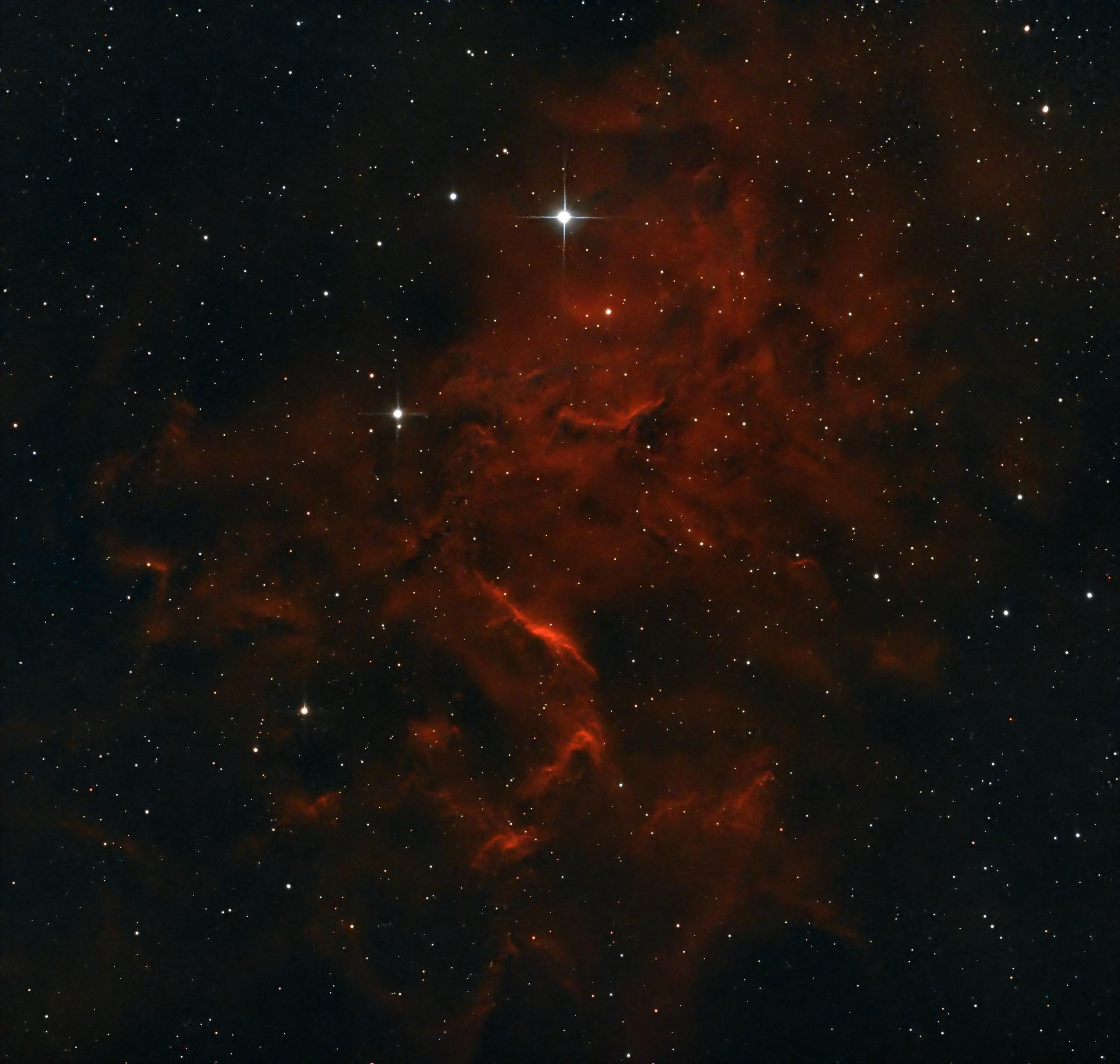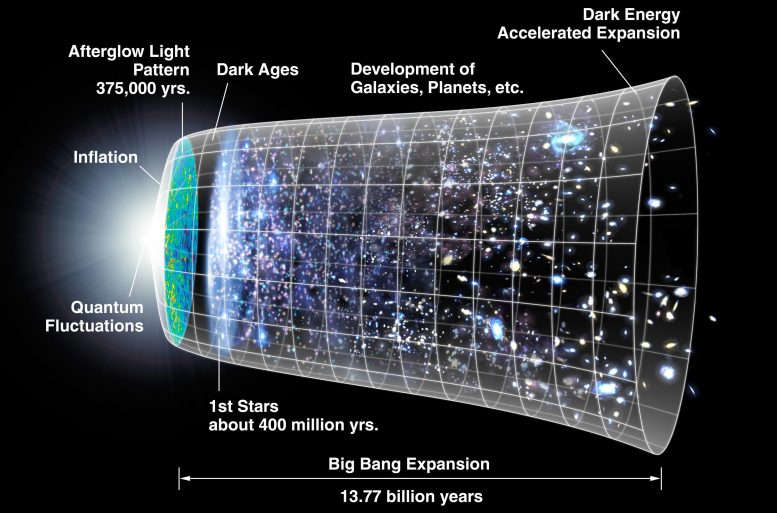New Physics Model Suggests Gravitational Waves, Not Inflation, Shaped the Early Universe

A new study is challenging one of the most accepted ideas in cosmology: the inflation theory, which proposes that the universe expanded at an extraordinary rate in the first fraction of a second after the Big Bang. Researchers from Spain and Italy have put forward a different perspective — that gravitational waves could have been the real driving force behind the structure and evolution of the universe.
This work, published in Physical Review Research, provides a fresh way of looking at the origins of everything from galaxies and stars to planets and life.
The Standard Picture: Inflation Theory
For decades, the dominant explanation for the early universe has been the inflation model. According to this idea, the universe went through a period of rapid, exponential expansion right after the Big Bang. This expansion smoothed out irregularities, stretched quantum fluctuations, and set the stage for the large-scale structure of the cosmos we observe today.
However, inflation requires several fine-tuned conditions to work. It depends on a hypothetical particle or field called the inflaton, which has never been directly observed. To make the theory fit the data, cosmologists often rely on highly specific mathematical potentials for the inflaton, which can seem arbitrary and speculative. While inflation explains many observations remarkably well, its foundations remain unsettled and debated.

The New Proposal: Gravitational Waves at the Core
The research team — Daniele Bertacca, Raúl Jiménez, Sabino Matarrese, and Angelo Ricciardone — approached the problem differently. They suggest that instead of needing an inflaton field, the universe could have begun in a state of de Sitter space, a kind of spacetime described in the 1920s by Dutch mathematician Willem de Sitter in collaboration with Albert Einstein.
In this framework, gravitational waves (ripples in spacetime predicted by Einstein in 1916) arise naturally from quantum fluctuations in the vacuum. The team’s simulations show that these waves could generate the scalar perturbations — tiny irregularities in density — that seeded the formation of cosmic structures. Importantly, these perturbations come not directly from an inflaton, but from second-order effects: interactions of tensor fluctuations (gravitational waves) that produce scalar fluctuations.
The result is a scale-invariant spectrum of scalar perturbations, which aligns with what we see in the cosmic microwave background (CMB). In simpler terms, this model reproduces the same kinds of patterns inflation is designed to explain — but without the inflaton.
Why Gravitational Waves?
Gravitational waves are ripples in spacetime created by massive accelerating objects such as black hole mergers or colliding neutron stars. Though Einstein predicted them, detecting them took nearly a century due to their extreme faintness. In 2015, the LIGO observatory made the first direct detection, a discovery that later won the Nobel Prize.
But in this model, the focus isn’t on astrophysical sources like black holes. Instead, it’s about primordial gravitational waves generated in the earliest instants of the universe. These waves would have been everywhere, influencing how matter and energy clumped together and shaping the seeds of cosmic structure.
Key Findings of the Study
- No need for an inflaton: The model works without introducing a speculative particle or field. Instead, it relies only on well-established physics — gravity and quantum mechanics.
- Scalar fluctuations from tensor modes: The scalar perturbations (the seeds of galaxies and structures) are generated by the self-interaction of gravitational waves.
- Graceful exit from inflation: One of the persistent puzzles in cosmology is how inflation ends, transitioning the universe into the hot, dense, radiation-dominated state needed for the Big Bang model to continue. This new approach suggests that the instability of de Sitter space itself provides a natural way out, avoiding the need for finely tuned “reheating” scenarios.
- Observable predictions: The model predicts distinctive non-Gaussianities — statistical fingerprints in the distribution of cosmic structures — that differ from standard inflation. Future measurements of the cosmic microwave background and large-scale structure could test these predictions.
- Consistency with observations: The model can explain the near scale-invariant spectrum observed in the CMB and could produce a tensor-to-scalar ratio (the balance between gravitational waves and density fluctuations) compatible with current observational limits.
Gravitational Waves Through History
To appreciate why this study is so striking, it’s worth revisiting the history of gravitational waves. They were first hinted at mathematically in 1893 and 1905 by Oliver Heaviside and Henri Poincaré, before Einstein firmly established them in his theory of general relativity in 1916. For decades, they remained purely theoretical, with scientists debating whether they even existed physically.
It wasn’t until 2015 that LIGO, using laser interferometers in Washington and Louisiana, detected gravitational waves from the merger of two black holes over a billion light-years away. Since then, gravitational wave astronomy has opened a new window into the universe, confirming dozens of cosmic mergers and providing insights into neutron stars, black holes, and the nature of spacetime itself.
Now, this new proposal pushes gravitational waves back into the very birth of the universe, suggesting they may have shaped everything we see today.
The Bigger Mystery: The Origins of the Universe
Despite decades of progress, the origin of the universe remains one of science’s greatest mysteries. The Big Bang theory explains the expansion of the universe extremely well, but questions linger about what came before it, or even whether “before” has any meaning. Inflation tried to answer these gaps, but it raised puzzles of its own, such as:
- Why should the inflaton field exist?
- Why does its potential have the form it does?
- How exactly did inflation end?
By proposing a model without an inflaton, this new work attempts to simplify the picture. Rather than building new, unobserved physics into the model, the authors show that gravity and quantum mechanics — both observed and tested — might already be sufficient.
Implications and What Comes Next
This model makes specific predictions that can be tested in coming years. Future experiments like CMB-S4, LiteBIRD, and upgraded gravitational wave detectors may provide the data needed to confirm or reject this idea. In particular:
- Non-Gaussianity tests: If the statistical distribution of fluctuations in the CMB doesn’t match the patterns predicted by this model, it could be ruled out.
- Gravitational wave background: If a primordial background of gravitational waves exists, detecting it would strongly support models like this one.
- Spectral tilt and ratios: Precise measurements of the spectrum of perturbations will help distinguish between this and standard inflation.
If confirmed, the model would mark a profound shift in cosmology, replacing inflation as the leading explanation of the early universe.
Broader Context: Understanding De Sitter Space
Since the model depends on de Sitter space, it’s worth explaining what that means. De Sitter space is a solution to Einstein’s equations that describes a universe dominated by a positive cosmological constant (essentially, dark energy). It has a constant expansion rate and is highly symmetric.
In the 1920s, Willem de Sitter worked with Einstein to explore how such a spacetime would behave. In modern cosmology, de Sitter space has become especially relevant because our universe today is accelerating, likely due to dark energy, which acts similarly to a cosmological constant.
In the early universe, de Sitter space provides a natural setting for rapid expansion. But unlike inflation, which adds an inflaton field to drive it, this new model shows how quantum gravitational waves within de Sitter space might be enough to explain structure formation.
A Different Way of Thinking
This proposal is not the final word on the matter. Many scientists will scrutinize it, looking for weaknesses or assumptions that might not hold up. But the value of the work lies in showing that inflation is not the only game in town. By considering alternatives, cosmologists broaden the scope of what might have happened at the dawn of time.
At the heart of this is a simple idea: maybe we don’t need speculative new ingredients to explain the universe. Maybe gravity and quantum mechanics, interacting in unexpected ways, already provide the answers.
Reference
Research paper: Inflation without an inflaton – Physical Review Research, 2025





